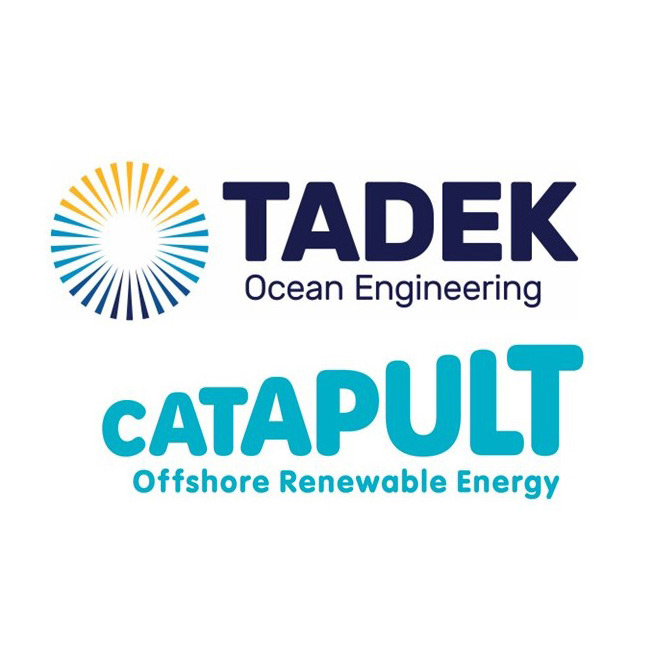Improving the reliability and efficiency of dynamic cables and their ancillaries is a top priority within the floating offshore wind industry. There is a strong emphasis on addressing the challenging issue of Dynamic Cable Interfaces (DCI) and reducing the number of cable failures currently seen within other marine technologies such as wave, tidal and fixed wind.
Tadek, in partnership with the Offshore Renewable Energy (ORE) Catapult, is conducting a state-of-the-art industry review on DCI, which encompass essential components such as Bend Stiffener Connectors (BSC), cable tube designs (cable I/J tubes), hang-offs, High-Voltage (HV) connectors, weak link, quick release, pull-in heads and installation methods. This includes a list of industry solutions proposed by designers, manufacturers, and relevant DCI development stakeholders.

Typical cable arrangement for a spliced connection with the Dynamic Cable Interface (DCI)
The ORE Catapult is the UK’s leading research and innovation centre for offshore renewables, comprised of the most significant industry stakeholders. It is a key player in accelerating the offshore renewables sector, utilising its unique facilities, and engineering capabilities to connect industry and academia to drive forward innovation in renewable energy.

ORE Catapult’s partners collaborating to drive forward innovation in offshore renewables
Tadek is a dynamic consultancy and project delivery resource for marine, offshore and subsea projects. We offer services in Subsea Umbilical Riser and Flowline (SURF) and marine analysis, FOW and floating systems design, structural design, naval architecture, and project engineering and project management support to marine projects.
The DCI is the cable section that connects to the floating wind turbine foundation and to the subsea connector. The DCI project entails collating industry knowledge through literature review and stakeholder engagement. It aims to:
- Establish what the industry considers the main issues and risks of current DCI technology.
- Identify and explore innovative solutions to improve DCI reliability and performance for floating offshore wind.
- Define well-established technologies and the type of interfaces expected.

Simplified Project Process Flowchart
It is imperative that the industry accelerates innovation within this sector through meaningful collaboration.
A questionnaire that will be used to inform this project can be found here. We invite all DCI industry leaders – manufacturers, suppliers, owners, users, and installation contractors, to contribute to the project by filling out the questionnaire*.
To know more about this project or related matters, please contact Daniela Benites (Daniela.Benites@tadek.co.uk) or the Tadek team here.
*We value your privacy and are committed to ensuring the confidentiality of your responses. All data obtained from this survey will be handled with the utmost care and kept strictly private. Your information will only be used for the purposes of this study and will not be shared with any third parties without your explicit consent. Thank you for your participation and trust. Please check the confidentiality question in Section 1 for further information.
About Tadek Ocean Engineering
Tadek offers services in SURF & Marine Analysis, FOW & Floating Systems Design, Structural Design, Naval Architecture, and project engineering & project management support to Marine Projects.
We work collaboratively as a trusted partner, dovetailing with stakeholders and project teams, providing specialist consultancy, complex analysis, engineering solutions, and practical project delivery.
Our expertise has benefited over 200 successful projects worldwide, supporting a wide range of requirements from high-value corporate projects through to prototype works.














